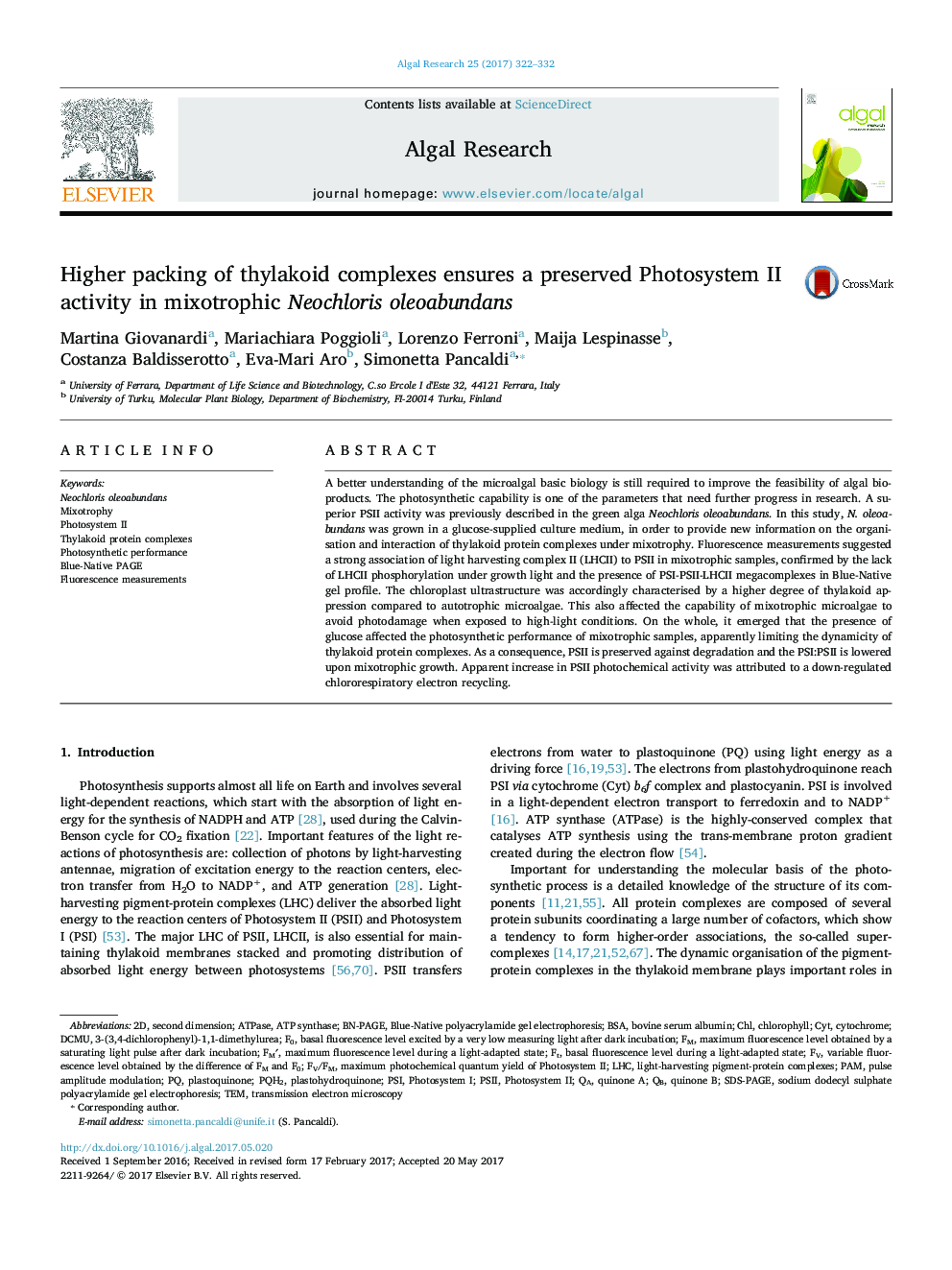| Article ID | Journal | Published Year | Pages | File Type |
|---|---|---|---|---|
| 5478363 | Algal Research | 2017 | 11 Pages |
Abstract
A better understanding of the microalgal basic biology is still required to improve the feasibility of algal bio-products. The photosynthetic capability is one of the parameters that need further progress in research. A superior PSII activity was previously described in the green alga Neochloris oleoabundans. In this study, N. oleoabundans was grown in a glucose-supplied culture medium, in order to provide new information on the organisation and interaction of thylakoid protein complexes under mixotrophy. Fluorescence measurements suggested a strong association of light harvesting complex II (LHCII) to PSII in mixotrophic samples, confirmed by the lack of LHCII phosphorylation under growth light and the presence of PSI-PSII-LHCII megacomplexes in Blue-Native gel profile. The chloroplast ultrastructure was accordingly characterised by a higher degree of thylakoid appression compared to autotrophic microalgae. This also affected the capability of mixotrophic microalgae to avoid photodamage when exposed to high-light conditions. On the whole, it emerged that the presence of glucose affected the photosynthetic performance of mixotrophic samples, apparently limiting the dynamicity of thylakoid protein complexes. As a consequence, PSII is preserved against degradation and the PSI:PSII is lowered upon mixotrophic growth. Apparent increase in PSII photochemical activity was attributed to a down-regulated chlororespiratory electron recycling.
Keywords
Mixotrophyquinone APQH2DCMUNeochloris oleoabundansblue-native PAGEBN-PAGEChlPSIIPSIPAM3-(3,4-Dichlorophenyl)-1,1-dimethylureaATP synthaseBSAFm′Fv/Fmbovine serum albuminSDS-PAGEblue-native polyacrylamide gel electrophoresissodium dodecyl sulphate polyacrylamide gel electrophoresisFluorescence measurementsTemATPaseLHCSecond dimensionChlorophyllcytcytochromePhotosynthetic performancephotosystem IPhotosystem IIpulse amplitude modulationTransmission electron microscopyplastoquinone
Related Topics
Physical Sciences and Engineering
Energy
Renewable Energy, Sustainability and the Environment
Authors
Martina Giovanardi, Mariachiara Poggioli, Lorenzo Ferroni, Maija Lespinasse, Costanza Baldisserotto, Eva-Mari Aro, Simonetta Pancaldi,
